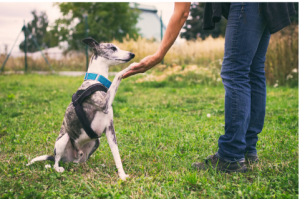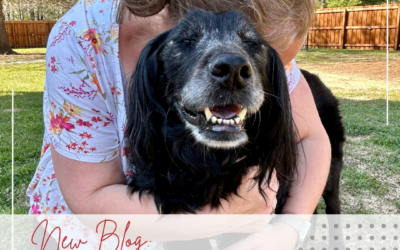Very often I get contacted by potential clients who are debating whether to use my private services or send the dog off to “boot camp.” I don’t know about you, but that doesn’t sound very fun to me. When I hear “boot camp” it conjures up images of military boot camp, with pre-dawn wake ups and being yelled at, up close and personal. This isn’t what training should look like. Training should be fun – for you and your dog. But, these “boot camps” have grand claims of “fixing” dogs or robotic obedience promised in just a few weeks, often with a guarantee. The allure of sending off an untrained dog to get magically fixed and not having to do anything, except pay for it, is almost always too good to be true and here’s the main reasons why. (Note: There are some positive reinforcement board and train places and they are not the places I’m talking about here. But, places billed as kennels or camps are typically red flags.)
Most “boot camps” use outdated, aversive or dominance methods, usually using any combination of aversive methods: yelling, leash hanging/corrections, shock/prong collars, spray bottles, citronella, fear and/or dominance. These methods are not only cruel and not recommended by veterinary behavior pros but can have long-lasting negative effects, especially on puppies or fearful dogs. As dog training is unregulated, before you hire a trainer, find out what methods they will be using and what happens when the dog makes a mistake. This video on transparency and what questions to ask is a good guide.
Another problem? Owners aren’t dog professionals, so they don’t always have a good grasp of what the dog’s “problem” really is, and they shouldn’t be expected to. That’s my job! But this can cause an owner to think a dog is merely “misbehaving” and seek out obedience training when in reality the dog may be fearful. To the owner, the dog isn’t doing what they are asking, so the dog is misbehaving. But, sending a fearful or aggressive dog off to a place that uses aversives definitely won’t help and will almost certainly make it worse.
So what’s an owner to do? I get it – we’re all busy. And sometimes we buy ourselves time by delegating things to others. I call a plumber when I have a busted pipe – I don’t spend hours and hours to try to fix it myself. But, as convenient as sending your dog off sounds, dogs aren’t pipes that can just be fixed. They’re not robots that you can just program to do stuff. Ultimately, you need to be involved in your dog’s training. Training isn’t just teaching the dog cues but also includes managing their environment, exercise, enrichment and educating owners (and  kids!) about body language, consistency and how to effectively communicate with this animal that you’ve brought into your home. And, if it’s done right, you will have fun, your dog will have fun and your relationship will be better off!
kids!) about body language, consistency and how to effectively communicate with this animal that you’ve brought into your home. And, if it’s done right, you will have fun, your dog will have fun and your relationship will be better off!
Another important thing to keep in mind is dogs are terrible generalizers – it’s why your dog sits at home but seems to forget how to sit when he’s outside. He hasn’t forgotten how to sit but translating what the dog has learned in one context doesn’t always translate to a new place or new person immediately, especially if there’s more interesting things going on.
And lastly, some issues are better worked on where they are a problem. If your dog is nipping at your kids or protective of a specific location in your home, it’s much more efficient to tackle those things where they happen and include everyone involved in the training. If you have kids, we need to include kids in the training process, both for the dog and for the kids.
So what are the options? You want your dog trained but don’t want to or have the time. Consider day training, where a trainer comes into your home (usually while you’re at work) and works directly with the dog and then every few sessions, you’re involved in what’s called a transfer session, to hand off the skills and bring you up to the dog’s speed. This can be a great compromise – very efficient and your dog is learning in their own space.
If you’re really looking to send your dog away to a board and train, find a positive reinforcement trainer who offers this service. They do exist, but overwhelmingly the ones advertised tend to be the aversive ones I’ve been talking about.
No matter what you decide, be sure to ask questions of any trainer you’re considering working with – whether or not they’ll be boarding the dog. If you need help finding a qualified trainer, check The Academy for Dog Trainers directory or the Pet Professional Guild directory. If you still can’t find help or are unsure if the trainer you’re considering is using the right methods, contact me.
Happy training!
![]()




